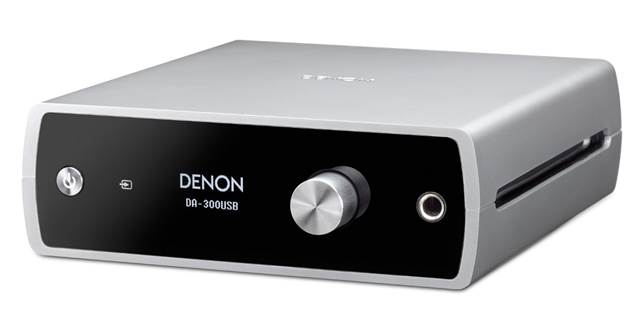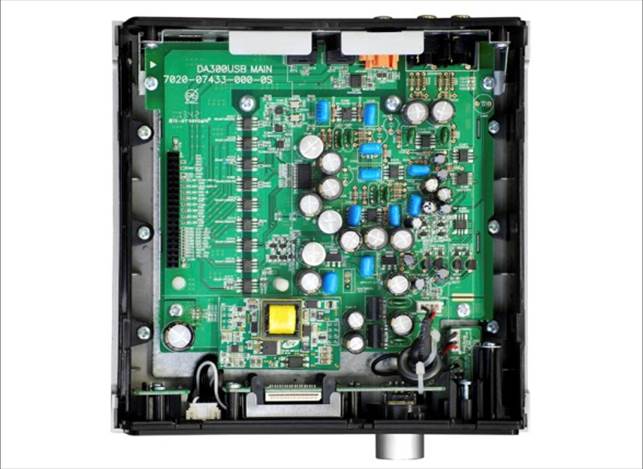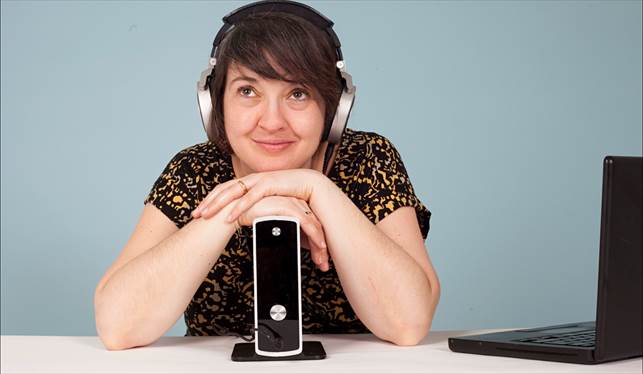The market for stunning, affordable DACs heats up
further with an offering from Denon, one of digital audio’s true pioneers: the
DA-300USB DAC/headphone amp
Shoot-outs mean one victor and a bunch of losers. I never
liked 'em, any more than I would want to pick one wine from my cellar and ditch
the rest. Life is not that simple. But consumers always demand a last-
man-standing approach to hi-fi. And it would appear that Denon's rather tasty
DA-300USB DAC/headphone amp has an obvious and inescapable rival in the NAD D
1050 we've reviewed.
There is no way to avoid this confrontation. Side-by-side,
they even seem to fill identical volumes, whether used vertically or
horizontally, and is a much welcomed development. The Denon is slightly
smaller, but there's not a lot in it.

Those old C&W
recordings were reproduced with snap and verve
So which to choose?
Layouts are similar, too, with each having front panel
headphone sockets and volume controls. Both have ‘back-lit' indicators instead
of screens per se, with soft-touch source selectors. My only gripe with the NAD
is its soft-touch on/off, which is temperamental; the Denon uses a proper
button. Oddly, neither of them has a front-panel USB input for easy, occasional
access.
As for headphone usage, read into this what you will if
you're a headphone junkie: Denon places a 'Ain (6.35mm) socket at what could be
either the top or bottom (in vertical mode), while NAD's 3.5mm socket is
located at what would be the bottom. So is the Denon more ‘audiophile' by
opting for the ‘real man's' type of plug? Not sure: the NAD has a
better-sounding, more powerful headphone amplifier section.
To create further imbalance, with the Denon retailing for
$500 and the NAD selling for $670, the pricing alone might seem to be the
game-changer. This is an essential part of our ‘Budget Esoterica' ethos: every
pound counts in these reviews. It's all about context, and $117 is massive at
this level, whereas it wouldn't even pay for the shipping of, say, a D'Agostino
Momentum amp.

Denon’s
proprietary ‘Advanced AL32 processing’ upsamples all inputs to 192kHz/32-bit
before addressing a PCM1795 DAC and separate line out and headphone ampliers
In this equation, value-for-money isn't merely paramount:
it's absolutely critical. Your extra money for the NAD D 1050 buys XLR-type
balanced outputs and one more coaxial digital input so only you can decide if,
sound aside, that's worth the additional $117. Same goes for the better
headphone amp, if headphones are an essential part of your system criteria.
But to turn this into a Denon/NAD two-hander is to ignore an
arena full of combatants: DacMagic models from Cambridge, a plethora of USB
DACs designed for road warriors (eg, the Geek Out, Audioquest's DragonFly) but
which also work in the home, the V90 from Musical Fidelity, ad infinitum. And
that's not to forget TEAC, which also has a $670 DAC/preamp which - like the
Denon - can handle DSD5.6.
There are now so many DACs, headphone amps and combination
units on the market that I'm surprised an enterprising publisher hasn't
produced What Headphone Amp and DAC?. These are, after all, ‘the future of
audio'.
What you must also consider, though, if you're in the market
for a USB DAC, is what you need for facilities: stripped-down, single input-only
models start at a mere $165. Of course, designs like the Denon and the NAD are
actually multi-source preamplifiers lacking only a volume control for the main
output - though it wouldn't have killed them to find a way to make the headphone
volume rotary serve the main output. You can still use the Denon as a preamp
even if your source, ie, your computer, allows you to control output level - as
do iTunes, Fidelia and the like.
Palatable digital
In keeping with the framework of ‘Budget Esoterica', I went
nowhere near my high-end reference system when playing with the Denon. This is
not about using $500 DACs with $16,700 preamps, and I am a slave to context;
it's about a balanced distribution of funds - the only way to put together a budget
system.

You can still use
the Denon as a preamp even if your source, ie, your computer, allows you to
control output level
My only ‘cheat' as regards price was using the Astell &
Kern AK120 digital player, which hardly qualifies as a budget esoterica
candidate at $1,170 or so. But the iPod is a sonic nightmare, and I hadn't the
heart to hamstring the Denon with a naff source, so all listening was
undertaken with the A&K, a MacBook Air and an iMac, using Fidelia as well
as iTunes.
All the components in my desktop system are obsolete: in
addition to a NAD 315BEE integrated amp feeding Spendor LS3/5As (early 11ohm
version), I also used a Quad 99 preamp and Quad 909 power amp. While these are
not budget esoterica either, a canny shopper might find them at a price which
wouldn't court bankruptcy - second-hand is certainly a part of the budget
esoterica mind-set!
Headphones included Sennheiser HD414s, Focal Classics and
B&W P5s, but I didn't spend a lot of time with the cans: the headphone amp
is, as I've suggested, not the Denon's strong suit. It's short on power, and
the bass was soft. Detail was excellent, the treble sweet, but it's not the
reason I would buy the Denon: its greatest virtue is making digital signals
palatable.
One tense moment occurred when I couldn't get a peep out of
the Denon. The two frightening notices (this DAC's equivalent of a Microsoft
Windows ‘blue screen') are ‘Unlock' and ‘Unsupported'. Simply put, this unit,
which upsamples to 192kHz, resolutely ignores anything above that.
I couldn't figure out why it was recognising the Astell
& Kern's optical digital output but neither of the Macs: I had
inadvertently set Fidelia on both my computers to a 384kHz ceiling. The audio
gods smiled, and something told me to go into Fidelia's settings to reduce it
to 192kHz. Presto!